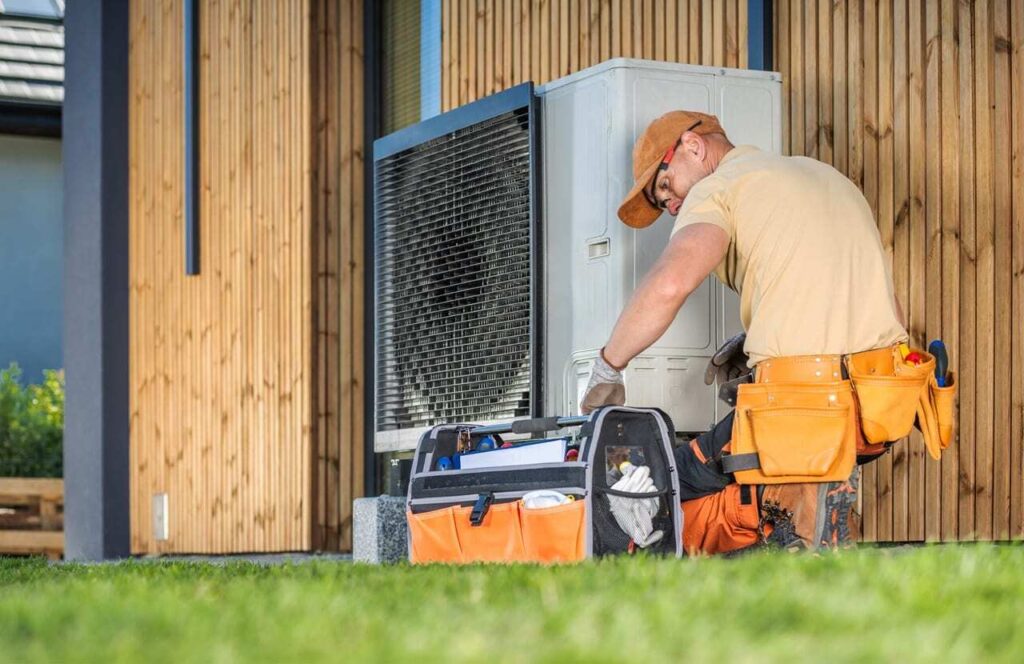Maintaining a functional heat pump is essential for keeping your home comfortable, especially during the cooler months in Tampa. A well-operating heat pump ensures that your living space stays warm and cozy without sudden fluctuations in temperature. Paying attention to your heat pump’s performance can help you detect issues early and avoid inconvenient breakdowns. One critical aspect of heat pump maintenance is monitoring the refrigerant levels. Proper refrigerant levels are crucial for the heat pump’s efficiency and overall safety. When refrigerant levels dip too low, the heat pump struggles to regulate the indoor temperature, which can result in increased energy consumption and discomfort.
Understanding the signs of low refrigerant in your heat pump can help you act quickly to resolve problems. Recognizing these early indicators can prevent more serious issues from developing, thereby ensuring your home remains a haven from the chilly weather outside. By staying informed, homeowners can reduce unnecessary expenses and keep their HVAC systems running smoothly.
Unusual Noises from the Heat Pump
An early warning sign of low refrigerant levels in a heat pump is the presence of unusual noises during operation. These sounds can vary, but common ones include hissing, bubbling, or gurgling coming from the unit. Each of these noises indicates a potential problem within the system. Hissing noises can suggest a leak in the refrigerant line, while bubbling or gurgling might indicate that air has entered the refrigerant system due to low refrigerant levels.
These noises occur because the heat pump is straining to cycle refrigerant properly throughout the system. As the refrigerant decreases, the system may pull air into the lines, leading to these distinctive sounds. Not only do these sounds indicate inefficiencies, but they could also signal that more significant damage may occur if not addressed promptly.
If you notice these sounds, it’s important to contact professionals who can assess the situation. They can provide a thorough inspection and determine whether low refrigerant is the issue, thus preventing further complications. Our technicians are equipped to address these concerns and restore the system’s proper functioning.
Reduced Heating Efficiency
Another sign that your heat pump’s refrigerant might be low is reduced heating efficiency. When refrigerant levels decrease, the heat pump struggles to effectively absorb and transfer heat. This inefficiency becomes particularly noticeable during winter when maintaining a warm home is essential.
You might find that your heat pump runs continuously but still doesn’t achieve the desired temperature, or it takes significantly longer to warm up your home than usual. This reduced efficiency means the heat pump is working harder to provide the same level of comfort, leading to wear and tear on the system and an increase in energy consumption.
To tackle this issue, monitoring your heat pump’s performance is crucial. If you observe these signs, it’s wise to consult with a professional who can evaluate refrigerant levels and perform necessary repairs. Proactive measures not only enhance comfort but also extend the life of your heating system.
Ice Buildup on the Outdoor Unit
Ice or frost forming on your heat pump is another clear indicator that the refrigerant might be low. This issue occurs when the heat pump loses its ability to transfer warmth from the outdoor air efficiently, leading the coils to drop to a temperature lower than usual. As a result, moisture in the air freezes upon contact with these coils, creating a buildup of ice.
This ice formation can interfere with the heat pump’s normal operation and might even cause damage to components if left unattended. For example, a homeowner might notice that their outdoor unit is encased in a layer of ice and find that the heating inside their home is insufficient, even when the heat pump runs continuously.
To avoid such issues, checking your outdoor unit regularly is advisable, especially during colder months. If ice buildup becomes apparent, it is vital to reach out to our professionals who can address the refrigerant issue promptly. They can safely remove the ice and ensure the system operates efficiently without any lingering effects.
Increased Energy Bills
When refrigerant levels in a heat pump are low, the system must work overtime to achieve the desired indoor temperatures. This increased workload significantly impacts energy consumption, which homeowners can observe as a spike in their utility bills.
Monitoring energy costs can be an effective way to identify potential issues with refrigerant levels. Paying attention to any unexpected increase in your monthly bill is crucial, as it could point to problems within your heat pump system. If such an increase occurs, it’s best to inspect the heat pump soon after to prevent further wastage and potential damage.
To keep your energy bills in check:
1. Review and compare current and past energy bills for any noticeable differences.
2. Monitor the heat pump’s runtime to ensure it isn’t operating longer than usual.
3. Schedule regular maintenance checks to catch and address low refrigerant levels early.
Frequent HVAC System Cycling
Frequent cycling refers to the system turning on and off more often than usual. This behavior is usually a sign that the heat pump is not maintaining the correct balance of heating or cooling. Frequently cycling can indicate that refrigerant levels are too low, causing the pump to struggle when trying to maintain consistent temperatures.
Allowing the system to continue operating under these conditions could lead to more significant wear and tear, drastically shortening the unit’s operational lifespan. It’s important to recognize and address this issue quickly by consulting with our technicians, who can evaluate the refrigerant status and undertake necessary corrective measures.
Ensuring Proper Refrigerant Levels with Professional Help
Maintaining appropriate refrigerant levels is crucial for the health and performance of your heat pump. Regular checks and maintenance play a significant role in preventing issues that could potentially lead to costly repairs or replacements. These checks should always involve our skilled professionals, who have the training and equipment to safely handle refrigerants and perform any needed repairs.
Keeping your heat pump running efficiently not only promotes comfort in your home but also conserves energy, resulting in lower utility bills. After all, a well-maintained heat pump is an investment in your home’s comfort and energy savings. By addressing early warning signs, you can ensure your heat pump remains a reliable source of warmth for you and your family for years to come. Remember, persistent problems require expert intervention to maintain safe and efficient operation.
If you notice signs such as unusual noises or frequent system cycling, it might be time to consider professional help with your system, like our expert heat pump installation in Tampa to keep your home comfortable throughout the colder months. For a quick estimate or to book a service visit, please contact us today.




